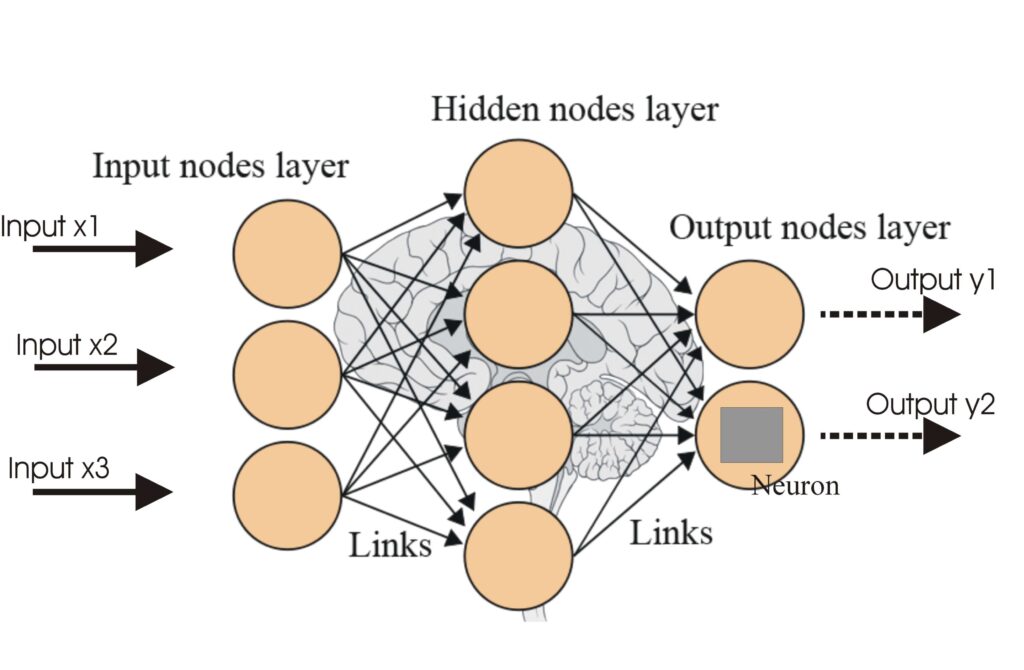
Neural Networks
A neural network, or artificial neural network (ANN), is a computational model inspired by the human brain, essential in AI and machine learning for tasks like ...
A Convolutional Neural Network (CNN) is a type of neural network designed to process grid-like data such as images, excelling at visual tasks like classification, detection, and segmentation.
A Convolutional Neural Network (CNN) is a specialized type of artificial neural network designed for processing structured grid data, such as images. CNNs are particularly effective for tasks involving visual data, including image classification, object detection, and image segmentation. They mimic the visual processing mechanism of the human brain, making them a cornerstone in the field of computer vision.
Convolutional layers are the core building blocks of a CNN. These layers apply a series of filters to the input data, enabling the network to capture various features such as edges, textures, and patterns. Each filter generates a feature map for evaluating object detection models in computer vision, ensuring precise detection and localization."), which is then passed on to subsequent layers for further processing.
Pooling layers, typically positioned after convolutional layers, reduce the spatial dimensions of the feature maps. This down-sampling helps in reducing the computational load and the number of parameters in the network, making the model more efficient. Common pooling techniques include max pooling and average pooling.
Fully connected layers, found at the end of the network, integrate the features extracted by previous layers to make final predictions. These layers connect every neuron in one layer to every neuron in the next, functioning similarly to traditional neural networks.
CNNs operate by extracting hierarchical features from the input data. Initially, simple features such as edges are detected. As the data progresses through deeper layers, more complex features are identified, enabling the network to understand high-level concepts like shapes and objects.
CNNs excel at classifying images into predefined categories. For example, they can distinguish between images of cats and dogs with high accuracy.
Beyond just classifying images, CNNs can also detect and locate objects within an image. This is crucial for applications like autonomous driving, where identifying objects like pedestrians and traffic signs is essential.
CNNs can segment images by dividing them into multiple regions or objects, making them invaluable in medical imaging for identifying different tissues or abnormalities.
CNNs are also used in various other fields, including:
Hyperparameters are the configurations that govern the training process of a CNN. Fine-tuning these parameters can significantly impact model performance.
Choosing the right optimizer can reduce training time and improve model accuracy. Common optimizers include:
Enhancing the dataset by applying transformations such as rotation, flipping, and zooming can improve the robustness of the CNN.
Regularization methods prevent overfitting by adding constraints to the model.
Choosing the right architecture or modifying existing ones can lead to better performance.
Leveraging pre-trained models on large datasets and fine-tuning them for specific tasks can save time and resources.
Using techniques like k-fold cross-validation ensures that the model performs well on different subsets of the data.
Tracking the model’s performance on a validation set and stopping training when performance ceases to improve helps to avoid overfitting.
Reducing the precision of the numbers used to represent the model’s parameters can lead to smaller models and faster computations.
Utilizing multiple GPUs or distributed systems to parallelize the training process can significantly speed up training times.
A CNN is a specialized artificial neural network designed to process structured grid data, such as images. It's especially effective for visual tasks like image classification, object detection, and segmentation.
The main components of a CNN include convolutional layers, pooling layers, and fully connected layers. These layers work together to extract and process features from input data.
CNNs are widely used in computer vision tasks such as image classification, object detection, image segmentation, medical imaging, natural language processing, and audio analysis.
CNN performance can be improved with techniques like hyperparameter tuning, optimizer selection, data augmentation, regularization, transfer learning, cross-validation, and using efficient network architectures.
Discover how to leverage Convolutional Neural Networks for powerful image and data analysis. Explore FlowHunt's AI tools and templates to accelerate your AI projects.
A neural network, or artificial neural network (ANN), is a computational model inspired by the human brain, essential in AI and machine learning for tasks like ...
Semantic segmentation is a computer vision technique that partitions images into multiple segments, assigning each pixel a class label representing an object or...
Computer Vision is a field within artificial intelligence (AI) focused on enabling computers to interpret and understand the visual world. By leveraging digital...
